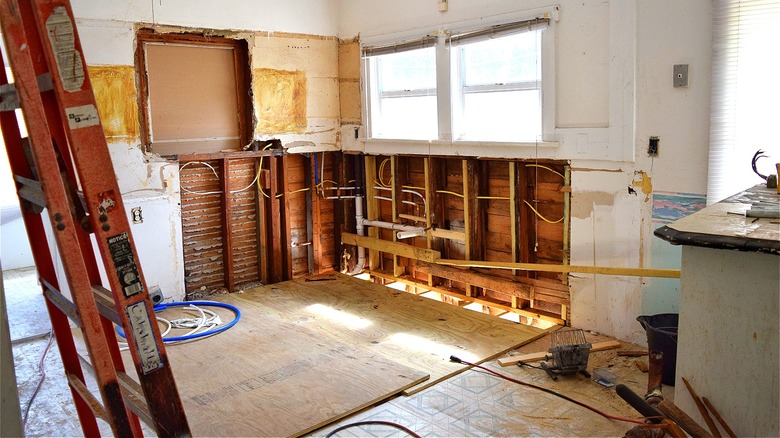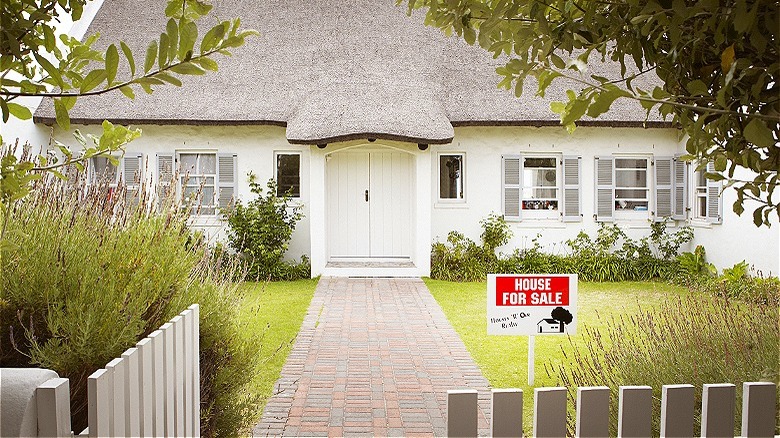What Is The 70% Rule In House Flipping?
Love it or loathe it, real estate flipping is more than likely here to stay. At its foundation, house flipping involves purchasing property with the sole intention of selling it for more than you paid. Differing strategies can include purchasing one or a group of properties at the same time, or even engaging in frequent consecutive flips to try and maintain a steady income. Some of the tenets of house flipping include buying low and selling high, along with ensuring you sell the property as soon as possible to avoid having your capital investment at risk. While there are a lot of strategies, tricks, and pitfalls to avoid, perhaps nothing is as important to house flipping as the 70% rule.
The 70% rule in house flipping is rooted in knowing the after-repair value, or ARV, of a property. The ARV of a property is the estimated future financial value of that property after it's been fully repaired or "fixed" up. This ARV is generally determined by referring to comparable recently sold nearby properties that are in the same general condition as the property you're looking to purchase (based on things like their size, style, and age). Knowing the ARV of a specific property, plus the estimated amount of repairs required to effectively "repair" the property, will allow you to calculate just how much you should spend on that property. Knowing this basic formula (i.e., the 70% rule) can ensure you don't overpay for a property you'll then be unable to get your investment back on.
Calculating the 70% rule
The nitty-gritty of the 70% rule is that, as an investor intending to flip a house, you shouldn't pay more than 70% of the ARV of a property, minus the cost needed for necessary repairs to fix it up for resale. Yet, determining the initial ARV amount can be tricky. For a simple ARV formula, multiply the average price per square foot of comparable properties by the square foot price for the property you're looking to purchase. For comparable properties, try to find three to six that have sold within the last 90 days. If you'd rather let someone else calculate, a real estate agent can get you a more comprehensive comparative market analysis for ARV. Once you have your ARV amount, you can then get to the 70% rule.
Let's say you're looking at a home with an estimated $250,000 ARV, but it also needs an estimated $50,000 in repairs. In order to determine how much you should pay for this property, according to the 70% rule, you would need to do some calculations. First, you would calculate 70% of $250,000, which is $175,000. Then, you would subtract the $50,000 repair amount, leaving you with a total of $125,000. This means that, according to the 70% rule in house flipping, you shouldn't spend more than $125,000 on that specific property, regardless of the asking price listed. Since house flippers will typically want to purchase a property below market value, unless the property is a foreclosure, there can be a fair bit of negotiating.
The dangers of flipping a house
There are various downsides and risks associated with flipping a house. From additional closing, marketing, and financing costs to unexpected repair expenses and declining ROI, house flipping isn't an easy or guaranteed way to earn a profit. Many people miscalculate just how much money — and time — is required to efficiently and effectively flip a property (for instance, nearly 65% of house flips are cash purchases. which requires the buyer to have that much money readily available). Per Attom, a real estate data website, the average 2022 profit for a flipped property was $67,900 (or 26.9% in ROI), which was 3% lower than in 2021.
It's also important to realize just how popular house flipping has become, which can further hurt your chances of being profitable through an increase in direct competition. Attom also found that, in 2022, 407,417 single-family homes and condos were flipped, marking a 14% increase from 2021, and a 58% increase from 2020 numbers. In fact, 2022 house-flipping numbers marked the highest number of homes since 2005, even while gross profit margins on a home flip sank to their lowest since 2008.
It has become increasingly more difficult to turn a good profit on a home flip, not to mention the damage house flipping has done to the economy and to would-be homeowners. The house-flipping trend not only removes affordable homeownership opportunities from the market but it then pushes these homes into significantly higher price points that many can't afford (particularly those who might be buying a home for the first time).


